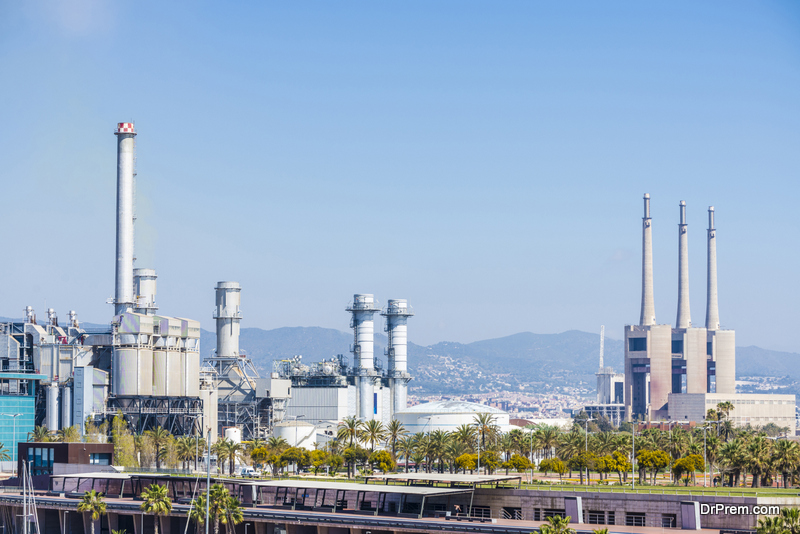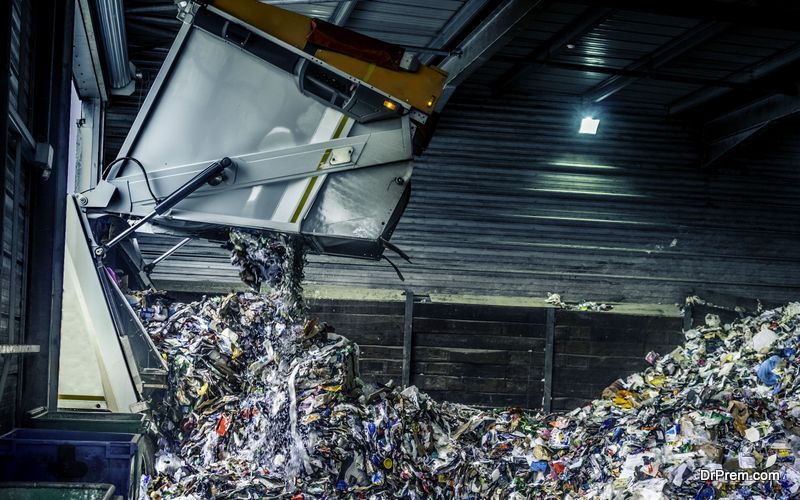Humans have tripled the use of natural resources in four decades. The World Resources Institute states that a half or three quarters of the total resources used worldwide returns to the environment in the form of waste. No wonder that the landfills are overflowing all over the world. Dumping waste in the oceans is not an option. So what happens to all this waste? A few enterprising entrepreneurs and scientists have found a way to convert trash into money. With new technology, decontamination of open dumpsites and landfills is profitable for the environment and people. Let’s see how this landfill profitability is possible:
Landfill profitability: how is it possible
 Landfills have been a necessary evil till now. We have to dump our garbage somewhere, so landfills have provided the solution for years. But these landfills produce dangerous greenhouse gas emissions which contribute to global warming. Metals like lead leach out into waterways making water toxic.
Landfills have been a necessary evil till now. We have to dump our garbage somewhere, so landfills have provided the solution for years. But these landfills produce dangerous greenhouse gas emissions which contribute to global warming. Metals like lead leach out into waterways making water toxic.
With new research and technology, it is now possible to incinerate/combust the garbage to generate electricity, which turns garbage into money as well.
Waste to energy plants in the US
The amount of trash which was burned to create energy was 32.7 million tons this year, which cleared a lot of space from the landfills. The number of landfills in the US has decreased but the size of the existing ones has increased. US’s landfills are the third biggest emitter of methane. Methane is 25 times more potent than carbon dioxide as a greenhouse gas. To control methane emissions from solid waste, and to harness the energy present in landfills, burning the waste reduces landfill volume by 87%.
Waste Management’s waste-energy plant
 Waste Management, the company which owns the Simi Valley Landfill, spreading across 2,400 acres, has been able convert waste into energy. It has been able to profit from junk, capturing the methane released by decaying junk into fuel. This has been possible due to the advances made in modern chemistry and the subsidies and incentives given by the government.
Waste Management, the company which owns the Simi Valley Landfill, spreading across 2,400 acres, has been able convert waste into energy. It has been able to profit from junk, capturing the methane released by decaying junk into fuel. This has been possible due to the advances made in modern chemistry and the subsidies and incentives given by the government.
According to the EPA, landfill profitability has led to the increase of landfill waste-energy project from a mere 21 in the year 200, to 621 in 2013.Approximately 510 landfill owners plan similar projects to convert waste into energy. This increase in energy production would be able to power 700,000 homes in the US.
Waste Management upgraded its facility last year by incorporating a complex technology which reduces emissions even further, during the process of conversion. The government has also come up with more incentives, one of them being that the energy generated from landfills would be charged at a premium, thus increasing the profits of the waste-energy plants. This has inspired companies like Waste Management to invest up to $400 million and start methane-electricity plants at 60 more of their landfills.
Clean Energy’s clean gas
Clean Energy Fuels Corp. in Newport, California, invests in facilities which purify methane gas from landfills and makes it usable as a fuel to be used in cars and trucks. This is another example of landfill profitability, turning garbage into money. The company operates various gas stations which fills vehicles with renewable gas. Earlier, Clean Energy was just the one corporation to invest in renewable energy plants using solid, decaying waste from landfills. Now, there are many such companies.
Companies like Clean Energy and Waste Management are able to profit from junk, due to a generous subsidy package from the US government. Federal tax breaks enables Clean Energy and other renewable energy gas companies to offer renewable gas at rates which are cheaper than diesel or gasoline per gallon.
Agilyx converts plastics to fuels
Another story of landfill profitability is Agilyx. It’s a small company based in Oregon which converts unsorted plastics using the method of pyrolysis into hydrocarbons. The company has produced 250,000 gallons of renewable fuel using innovative technology. Agilyx has demonstrated that 5 tons of plastic waste can produce $520 worth of oil. These numbers have attracted Waste Management which is now building a plastic waste-energy plant to use Agilyx’s tech.
Agilyx’s technology may be the answer to solve the problem of nearly 33 million tonnes plastic which is dumped every year in US landfills. These plastic cannot be recycled as there could be contamination due to the mixing of different types of plastics. Agilyx’s new tech can be used to dispose of the plastic in a useful and responsible way, by small or big companies. This is because the Agilyx sells the basic technology which can be scaled up or down to match the needs of the buying companies.
Research shows landfill mining could reduce the use of natural resources
Yahya Jani, a researcher in the field of chemical engineering and environmental science has put forward the theory as well as the research that materials retrieved from landfills can be used in place of natural, raw materials.
In his published paper, he suggests that landfill mining could be a tool to achieve circular economy. Garbage need no longer be viewed as garbage, but as secondary resources to be used in various industries. He also invented a method which can be used to extract metals from glass waste. His method is effective for all old glass, including old computers and TV sets. Manufacturers can use his technology and turn landfills from being a burden and use them to provide landfill profitability.
Waste-energy facilities in Europe
 Denmark, Sweden and Netherlands have the most waste-energy plants in the world, and also have a high recycling rate. These countries have managed to keep waste in control by using it for energy generation. The next step the plants in Europe are taking is to feature tourist attractions such as ski slopes. The Spiitelau facility in Vienna has such a beautiful exterior that it is one of the top 10 tourist attractions.
Denmark, Sweden and Netherlands have the most waste-energy plants in the world, and also have a high recycling rate. These countries have managed to keep waste in control by using it for energy generation. The next step the plants in Europe are taking is to feature tourist attractions such as ski slopes. The Spiitelau facility in Vienna has such a beautiful exterior that it is one of the top 10 tourist attractions.
Shenzen, China
The world’s biggest waste-energy plant is in the process of being built in China’s Shenzen, which will burn approx 5,500 tons waste every day. The plant will also feature a hotel and a park. China’s waste-energy growth has been phenomenal – in 2005 there were 15 facilities and now there are 188!
Landfill profitability has led to the waste-energy grow steadily, and expected to touch $37.64 billion by the year 2020. With new research and government subsidies, waste-energy plants can make money while saving the planet from noxious gases.



